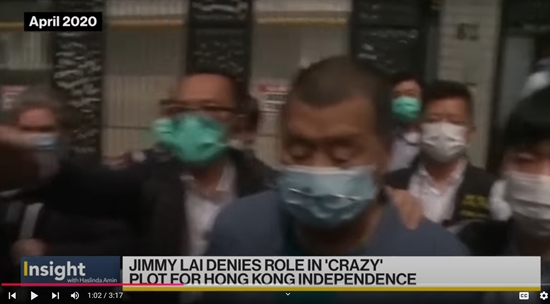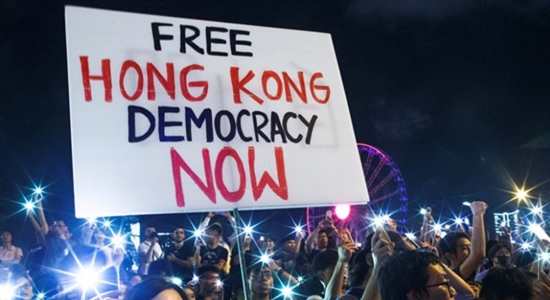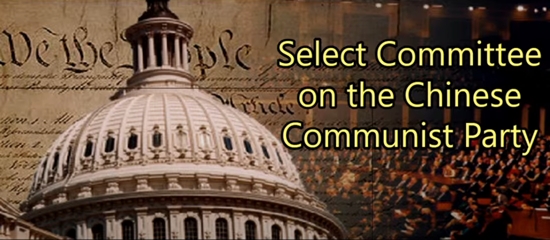
Yahoo asks whether we are ready to “ride the crest of the Chinese stimulus frenzy.”
The Economist writes, “At last, China pulls the trigger on a bold stimulus package. ‘Buy everything,’ says an American hedge fund.”
Even TV stock picker Jim Cramer has joined the party.
Exceed, boost, stimulate, stabilize, enhance
China’s stock market responded to the new central bank measures on September 29, 2024 when its “main stock market index rose nearly 9% overnight Sunday—the largest single-day gain in more than 15 years.”
Thus, Red China generated the kind of excitement we see in financial markets whenever the Federal Reserve cuts its interest rates. The well-known complaint about Fed cuts, of course, is that providing cheap money to asset owners to buy more assets bestows the benefits of Fed stimulus on a chosen few.
By a Chinese government website, Beijing’s motives are painted broadly: “Experts consider the release of the new batch of policies a positive signal of strengthening policy coordination and efforts to achieve the annual economic growth target.” Note that the annual growth target is an improbable, if not ridiculous, five percent. That seems a large political risk, nailing the colors to a rate so aggressive at a time when the economy has been foundering. And the year is more than half over.
Oh well, if the final numbers have to be fudged to make a happy ending, so be it…
If Fed largesse helps only a short list of beneficiaries, Beijing’s new measures create no broader assortment of winners. But this fact is obscured by nebulous econo-speak: “The central bank’s policies, which exceed market expectations, will boost market confidence, stimulate the vitality of business entities, stabilize credit levels, and enhance the sustainability of financial support for the real economy, said Wen Bin, chief economist at China Minsheng Bank.”
Capital decumulation
Let’s look at what has been or will be enacted.
First, China’s central bank has lowered its reverse repurchase rate. This lowering delivers short-term cash that enables banks in need to solve immediate liquidity challenges. Lowering the rate may help the day-to-day operations of such banks, but it does not solve the larger liquidity challenge that is driving reverse repo demand.
Second, mortgage rates are to be reduced about half a percent. The purpose is to help banks make more mortgage loans.
Third, the central bank has cut the amount of collateral that banks have to hold in reserve. Go out and play, kids. Have fun.
Fourth, the down payment amount on second homes has been reduced, which may stimulate more mortgage business, perhaps even more construction lending. But is the consumer demand there?
Are we seeing a pattern yet?
Fifth, the central bank reiterated support for a fund set up in May that will help local governments buy unsold homes.
Sixth, a facility of about $70 billion will be set up to enable the financial sector to “tap liquidity when purchasing stocks.” This is a stock-purchase subsidy.
Seventh and last, a facility will be set up to enable corporate stock buy-back programs. Buy-backs raise stock prices, which triggers bonuses for CEOs in the absence of growing market share or funding of research or acquisitions. Buy-backs strengthen stock market performance (the stock is going up!). And if you consider this to be an encouraging economic indicator, as American politicians do, then this is politically helpful.
Frenzy feeding
Beijing thus seems committed to backing the losers, reinforcing failure, extending losses. Even the extravagant loans made by Chinese banks to poor countries are in enough trouble to be triggering emergency follow-on loans.
Poke around and you can find some skepticism. The bankers at Julius Baer wonder if these measures are just a “quick fix.” Hedge Funder Ray Dalio estimates China’s problems to be “at least as severe as the Japanese situation starting in 1990,” with a need for “very complicated and politically charged” debt restructuring. Tianlei Huang, research fellow at the Peterson Institute for International Economics, says: “This economy has many deep, structural, fundamental problems that cannot be turned around just simply by a stimulus package.”
The doubts don’t deter policymakers from promoting “an even larger fiscal stimulus package, amounting to as much as $1.4 trillion worth of yuan, to be unleashed over two years.” The hammer sees every problem as a nail.
A month ago, as recently as September 5, The Economist was saying that “China’s giant economy faces an equally giant crisis of confidence—and a growing deficit of accurate information is only making things worse. Even as the country wrestles with a property crash, the services sector slowed by one measure in August. Consumers are fed up. Multinational firms are taking money out of China at a record pace and foreign China-watchers are trimming their forecasts for economic growth.”
Can a “bold stimulus package”—bank-centric and credit-centric—reverse the economic tides? Of course not. Avoid the stimulus frenzy; it’s just a headline frenzy. □
James Roth works for a major defense contractor in Virginia.
Also see:
Mises.org: “Human Action by Ludwig von Mises: ‘Credit Expansion’ ”
“The objective of credit expansion is to favor the interests of some groups of the population at the expense of others. This is, of course, the best that interventionism can attain when it does not hurt the interests of all groups. But while making the whole community poorer, it may still enrich some strata. Which groups belong to the latter class depends on the special data of each case.”





